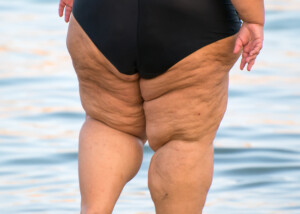
Don’t count on weight loss if you’re making mistakes with your APPROACH to working out, what you believe.
Here are 7 skewered beliefs that will kill any chance at losing weight.
1. Believing that as long as you’re “moving,” you’re doing enough to get result. As long as whatever you’re doing ranks higher in energy-expenditure than watching TV, you’re getting enough exercise.
It’s this very approach to working out that keeps an overweight body overweight, because this approach doesn’t consider the concept of forced adaptation.
Mere motion doesn’t always force a body to adapt. When your body is made to adapt to new demands, it burns excess fat for energy. Movement must be demanding enough to bring about this change.
If you seem highly resistant to fat-burning, you must re-evaluate what kind of routines you’re doing. Are they mere movement?
Or do they force you to work hard and breathe heavily? Do you employ scientifically-proven fat-burning strategies such as high intensity interval training, burst training, compound weight routines and intensity techniques such as negative training, drop-sets and supersets?
2. Believing that excess weight hinders cardio effort just because it hinders cardio performance.
Performance isn’t what gets results; effort is. Very high effort levels are possible with the obese body.
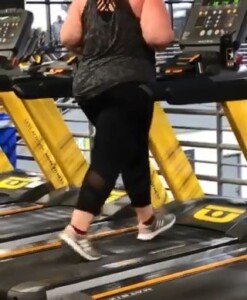
Do not confuse performance with effort. This isn’t about expecting a 5-10, 250-pound man to sprint around the track like a greyhound.
It’s about putting your body through a routine that drains you in a feel-good way, even if it’s jogging only 3 mph.
You may have to breathe very fast and hard, and sweat buckets to sustain this slow routine, but this is high effort for this particular body.
You may feel that jogging is just too uncomfortable, and that it’s far more tolerable to just walk around the track. You must figure out what “uncomfortable” means to you.
Does it mean knee pain or simply being averse to exertion? A fit, leaner body isn’t created by comfort; it’s created by a lot of effort. If you can actually jog without knee pain, then you are ready to jog.
However, the issue then becomes duration. For how long should you jog?
Pay mind to odd sensations that aren’t a normal part of exertion such as heel pain or low back pain.
3. Believing that it’s not natural, and even sinister, for a very overweight body to huff, puff, pour sweat and become exhausted.
If you are plus-sized, you must not fear exercising with vigor and rigor. I’m not saying go out there and pound your knees on the hard pavement.
You must learn which routines you can do with a high level of effort, and which ones you must do with caution.
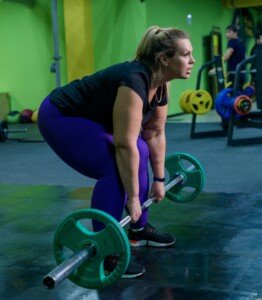
Shutterstock/Reshetnikov_art
This will take experimentation. There are numerous routines that a very heavy body can do with high intensity, while maintaining safety.
One of the safest routines for very heavy people (and all individuals) are seated routines with weights (free weights and machines).
Two more perfectly safe venues for large people to put their heart into, are the stationary bike and elliptical machine.
And many big people indeed use these. But often, they only go through the motions. Again, think effort, not mere movement.
Avoid gimmicky stunts like bear walking, duck walking, hopping on one leg, ball slamming while standing on a wobbly surface, etc. Stick to the tried and true basics.
It’s no more torture for a significantly overweight person to pant heavily and feel the “burn” from serious muscle fatigue, than it is for a 130-pound person to endure the same experience.
Exercise should be uncomfortable (but not painful), challenging and tough in order to generate results.
That lean, buff individual is just as uncomfortable working his or her butt off as any obese individual would be. The only time “results” come before “work” is in the dictionary!
4. Refusing to lift weights due to “intimidation” or self-consciousness.
Not all people in the free-weight area are built like Tarzan or Jane. And you can be sure that Tarzan and Jane couldn’t care less about your thighs or waist; they’re too busy fretting over their own bodies.
Yes, they are. If you think someone has the perfect body, do not assume that she isn’t just as self-conscious as you may be about your own body.
The free weight area is the one section of the gym where there are the least plus size individuals. But some things just need to get done.
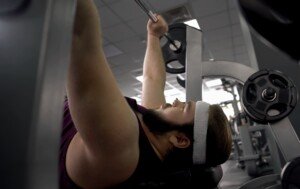
Training with free weights offers vast rewards! Imagine all the fat you will lose if you train hard with barbell squats, deadlifts, bench presses and dumbbell presses.
Don’t let intimidation keep you from the free weight area.
5. Assuming that strength-training and weightlifting equipment won’t accommodate a very large body.
The truth is, very few machines won’t fit an obese body. All the rest will. Manufacturers of these machines want profit.
They are designed to accommodate people of all sizes, if for no other reason than to generate sales to the gyms that purchase them.
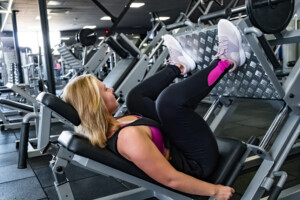
Shutterstock/Aleksey Boyko
Also, a typical 300-pound person can work out on a weight lifting bench without any problems.
I have observed it, and I have trained many very large individuals, and there are only a few pieces of equipment that they cannot work out with.
Explore your options by trying out the equipment. Do not just blindly make assumptions.
Seats on resistance machines can be lowered and raised. They can also be moved backwards to create more sitting room.
If you’re too large to feel comfortable in the seats of machines, use this opportunity to train at standing barbell and dumbbell work.
6. Assuming that being very big is a hindrance to weightlifting performance.
When it comes to lifting weights—either free weights or with strength-training apparatus—obese women and men are on an even playing field with slim people.
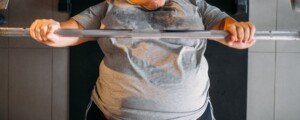
Shutterstock/ Nomad_Soul
In fact, many overweight sedentary people can lift heavier weights (depending on routine) than their thinner sedentary counterparts, due to their bodies having had to support the extra weight for so long.
So if the large person feels self-conscious trying to jog around the track, he or she can certainly feel confident when it comes to pushing or pulling weights.
7. Assuming that weightlifting will add even more size to an already over-sized body.
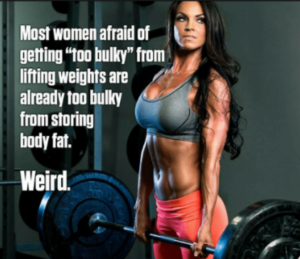
Women more than men have this unrealistic fear. But science proves that a strikingly effective way to melt off fat and plummet dress sizes is to pump hard with heavy weights.
Even moderate weights will slim down thighs, waists and upper arms in the obese or overweight individual.
Yes, muscle mass will increase, but at the same time, this new muscle mass will eat up surrounding fat tissue for sustenance.
The net result will be a much smaller, tighter body! Have your body fat percentage measured with skin-fold calipers by a personal trainer for proper tracking of weight loss.
Do not use those handheld electronic gadgets. Skin-fold readings are far more accurate and telling of fat lost.
The human body was not meant to be fat.
If you can’t seem to lose weight “no matter what” you do — I’ll bet everything including the kitchen sink that you’re committing at least four of the aforementioned mistakes with your exercise program.
 Lorra Garrick is a former personal trainer certified through the American Council on Exercise. At Bally Total Fitness she trained women and men of all ages for fat loss, muscle building, fitness and improved health.
Lorra Garrick is a former personal trainer certified through the American Council on Exercise. At Bally Total Fitness she trained women and men of all ages for fat loss, muscle building, fitness and improved health.
.

